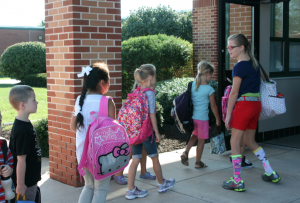![MPj03415220000[1]](https://lynhilt.com/wp-content/uploads/2012/09/MPj034152200001-300x214.jpg)
Educators are well aware that teacher evaluation systems are at the forefront of the discussions on school reform. A member of the general public who catches even a glimpse of educational headlines in the local news realizes this as well, although I would venture to say they don’t fully comprehend the scope of implementation and accountability of these systems. The general thinking behind the design and use of teacher evaluation systems is that if we create more effective teachers, better learning outcomes for students will result.
As an administrator, I have noticed that the topic of principal evaluation systems may be a secondary thought in “school reform” conversations. In fact, in many districts, the principals of under-performing schools are simply fired or reassigned to other roles or buildings. Many state systems define the effectiveness of teachers and principals based mainly on one measure: student achievement on standardized tests. This narrow focus does little to improve the quality of our educational organizations or the professionals within. Where’s the professional development? Where’s the support?
Principals play an integral role in the success of school improvement efforts, and they have the power to create solid foundations for improvements in student learning and teacher professional growth. If we believe that principals are essential in developing stronger school systems, how are their professional needs best addressed and supported?
Last week, NAESP and NASSP released a report from their joint Principal Evaluation Committee, which worked to examine best practices in principal evaluation across the nation. Along with analyzing available research on the effectiveness of current principal evaluation systems, they sought out the experiences of acting principals and administrators to help guide the development of a “comprehensive, researched-based framework for principal evaluation systems that links evaluation to professional development” (p. 1).
If you are a practicing principal, consider your current supervision/evaluation model. Does someone observe your practice? Are you held accountable to demonstrate proficiency in and mastery towards a set of leadership standards? Does your system measure your “worth” based on standardized student test scores? What types of professional feedback do you receive from supervisors or peers throughout the year? How is your professional growth nurtured and encouraged? How meaningful do you find your current model to be in improving your skills as a school administrator?
The Principal Evaluation Committee’s report findings indicate that most state and district evaluation systems “do not reflect existing principal standards or proven practices, and many principal evaluation instruments are neither technically sound nor useful for improving principal performance- despite the proven importance of the principal to school and student success” (p. 2)
The committee outlined a framework for principal evaluation based on seven underlying beliefs:
- created by and for principals
- part of a comprehensive system of support and professional development
- flexible enough to accommodate differences in principals’ experiences
- relevant to the improvement of principals’ dynamic work
- based on accurate, valid and reliable information, gathered through multiple measures
- fair in placing a priority on outcomes that principals can control
- useful for informing principals’ learning and progress (p. 3)
The framework is comprised of six key domains, summarized below, along with examples of measurement for each.
1. Professional growth and learning – “focuses on measuring a principal’s growth and the degree to which he or she has followed through on professional development or learning plans to improve his or her own practice” (p. 12)
Examples of measurement could include principal self-reflection, deliberate practice, attendance at national conferences, and portfolio development aligned with core leadership competencies.
2. Student growth and achievement – While included as a key domain in the framework, the report emphasizes
“although student growth and achievement are essential to evaluation systems, the Principal Evaluation Committee noted that while effective principals meaningfully share teachers’ instruction by providing relevant resources and supports that increase learning, there is little research that links principals directly to student achievement. Many of the contextual conditions (such as student and teacher variables) that influence high academic attainment or growth in a given year are also outside the direct control of a principal” (p. 14)
However, the principal does have a large amount of influence over areas including developing strong leadership teams, practicing distributed leadership, and serving as change agents and implementing the change process. As the committee wisely suggests,“states and districts should avoid an over-reliance on standardized test assessments of student achievement in favor of multiple measures designed to encompass the entirety of a student’s learning experience” (p. 15)
Examples of measurement could include portfolio of artifacts, work sample scores, benchmark assessments, discipline referrals, graduate rates, and participation rates in school activities.
3. School planning and progress– “focuses on measuring a principal’s ability to manage school planning processes for achieving school improvement goals and ensuring quality implementation of the programs and services identified with increasing student success” (p. 16)
The report highlights the work of Doug Reeves in his 2006 book, The Learning Leader, who says that through inquiry, implementation, and monitoring, the leadership of school improvement plans can be effective in supporting school achievement.
Measurement examples could include SIP implementation data, teacher and staff questionnaires, and district records.
4. School culture – “focuses on measuring a principal’s ability to develop and maintain a positive school culture that includes not only the tone of a school but also school safety, enthusiasm of students and faculty and level of connectedness with the community” (p. 17)
The report findings indicate that when a school has a positive climate, school improvement can occur at a faster pace and is more substantial. A culture of high expectations, collaborative opportunities, commitment to distributed leadership, and supportive social relationships within the organization, among other characteristics, are necessary for leaders to create a positive school culture.
Examples of measurement could include school climate surveys (from parents, staff, students), observations, interviews with key stakeholders, and stakeholder involvement in the school.
5. Professional qualities and instructional leadership – “focuses on measuring a principal’s leadership knowledge, skills and behavior competencies.” This includes the abilities “to lead instruction, build support for organizational mission and vision, and behave in a professional manner.” (p. 19)
The committee referenced sets of standards/processes used at the national level to evaluate principal qualities and practices, including ELCC 2011 Program Standards, ISLLC 2008: Educational Leadership Policy Standards, and NASSP 10 Leadership Skills.
Examples of measurement could include portfolio artifacts aligned to leadership standards, documented progress towards achieving professional growth plan goals, observations of practice, 360-degree feedback, and self-reflections.
6. Stakeholder support and engagement – “focuses on measuring a principal’s ability to build strong community relationships with stakeholders within and outside the school” (p. 21)
This domain speaks to the vital importance of the principal’s ability to be able to engage stakeholders and develop supportive relationships in order to meet the needs of all students. In order to effectively evaluate principals, stakeholder engagement must be measured.
Measurement examples could include stakeholder surveys, school recognitions, and newsletters/communications.
I appreciate that NAESP and NASSP recognized that creating a stronger evaluation system required the input of acting principals. They state,
“without principal participation in the national, state and local discourse about performance assessment design, new evaluation systems will not be improved, and principals may not view feedback from these new evaluation systems as informative for improvement of their practice or their schools” (p. 9).
The core belief underlying the framework is that “evaluation feedback be used as a formative tool for building a principal’s leadership capacity” (p. 24). If that is the case, principals need to be engaged as participants in the evaluative process, and this process should be used to build administrative capacity.
From this research, the committee recommends that states and districts design processes that are flexible for evaluation teams, and should include collaborative efforts with input and data from key stakeholders. States are encouraged to compare their current systems to the criteria in the report in order to identify and reflect upon areas of need in their current systems, and use the committee’s findings to design better professional supports for principals. In Pennsylvania, our new teacher evaluation system framework has been released and is in its pilot phases, and there are plans to release the newly revised principal evaluation system in January 2013. I look forward to examining this framework to see how it aligns with the committee’s findings.
Principals, I encourage you to work with your local districts, state departments, and leadership consortia to help influence principal evaluation system frameworks. Make your voices heard in order to make the systems work for you. Be transparent about your professional learning needs. We are in need of frameworks that help us grow as professionals, develop collective knowledge through powerful principals’ networks (and let us not ignore the role social media can play in this), and create systems that will promote stronger organizations and improved learning outcomes for students.

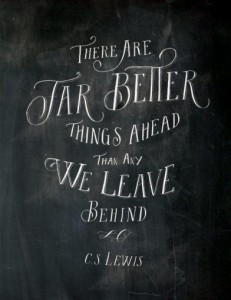
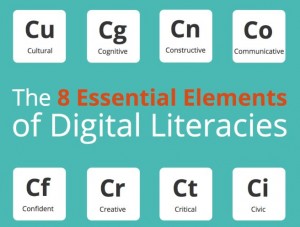




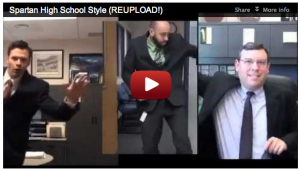

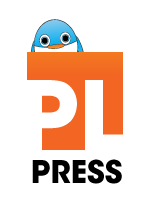
![MPj03415220000[1]](https://lynhilt.com/wp-content/uploads/2012/09/MPj034152200001-300x214.jpg)

